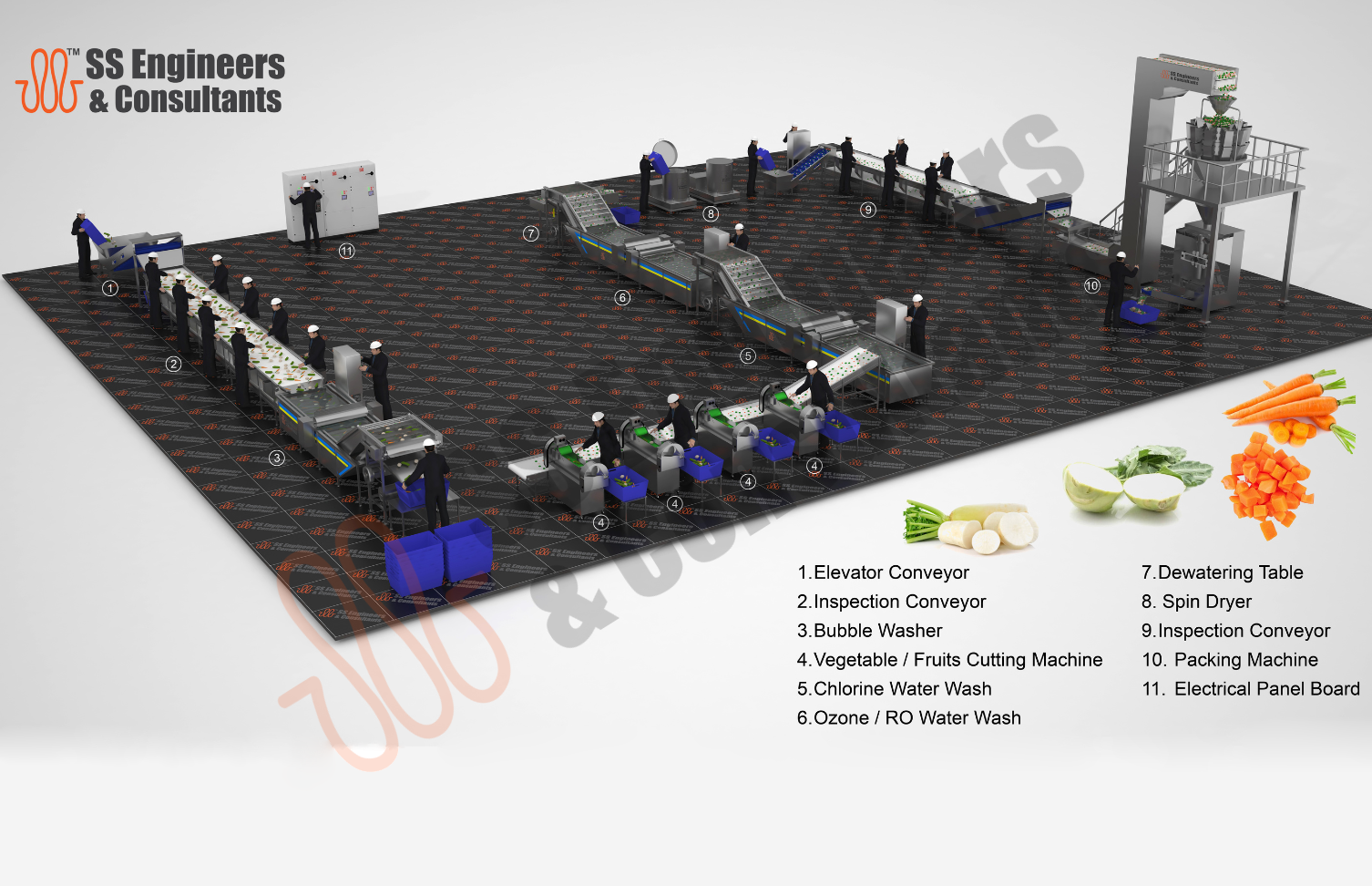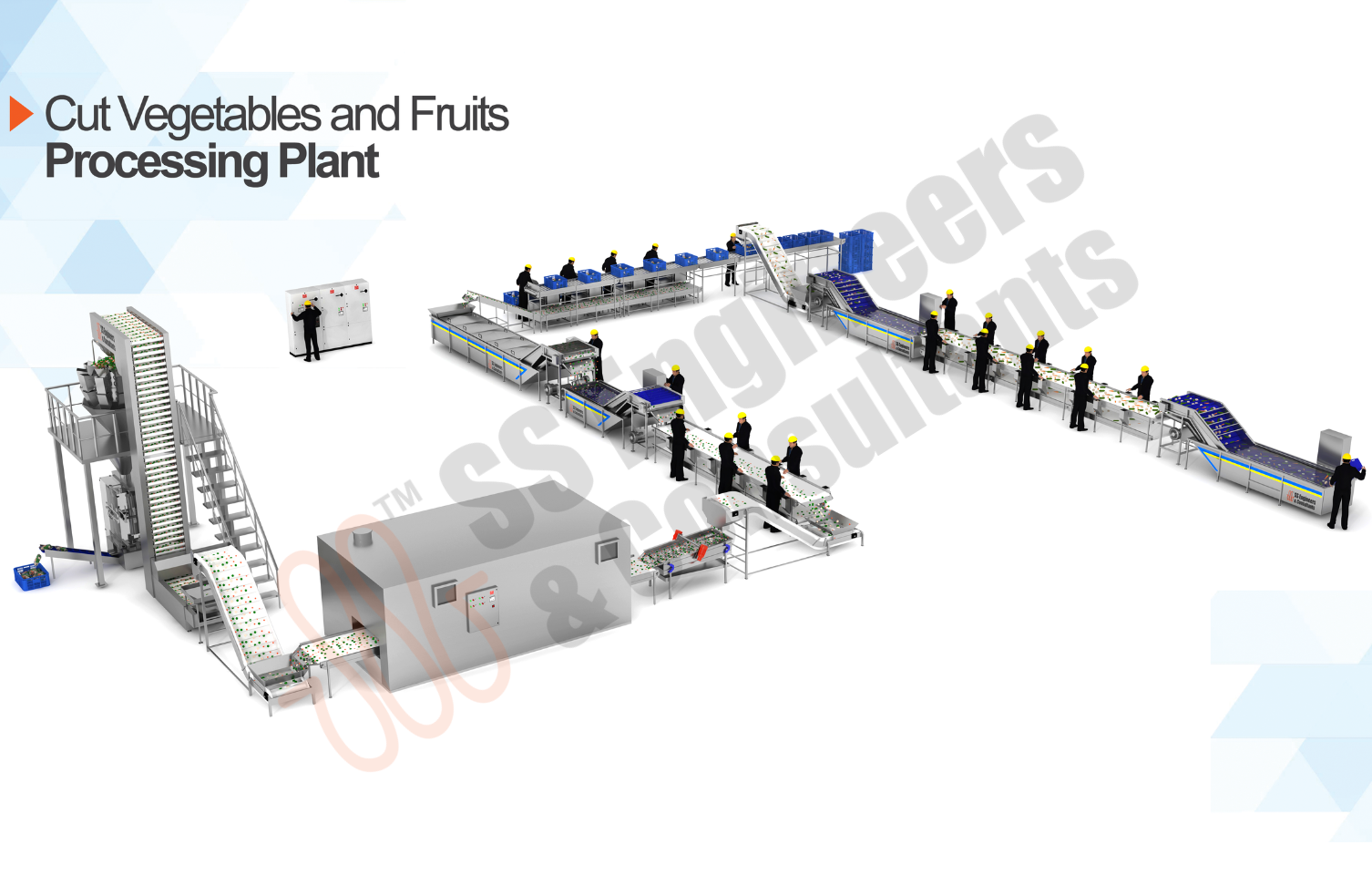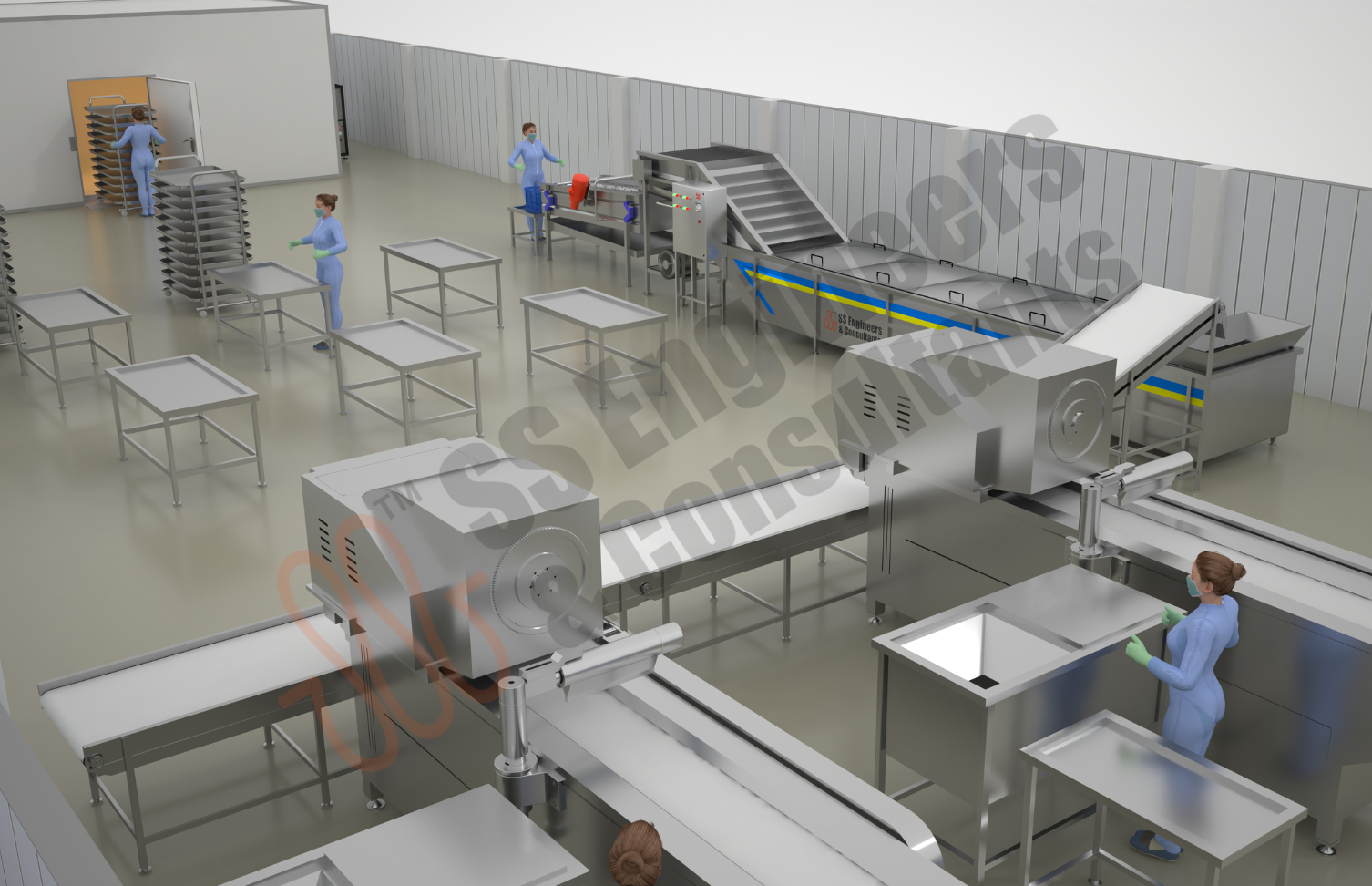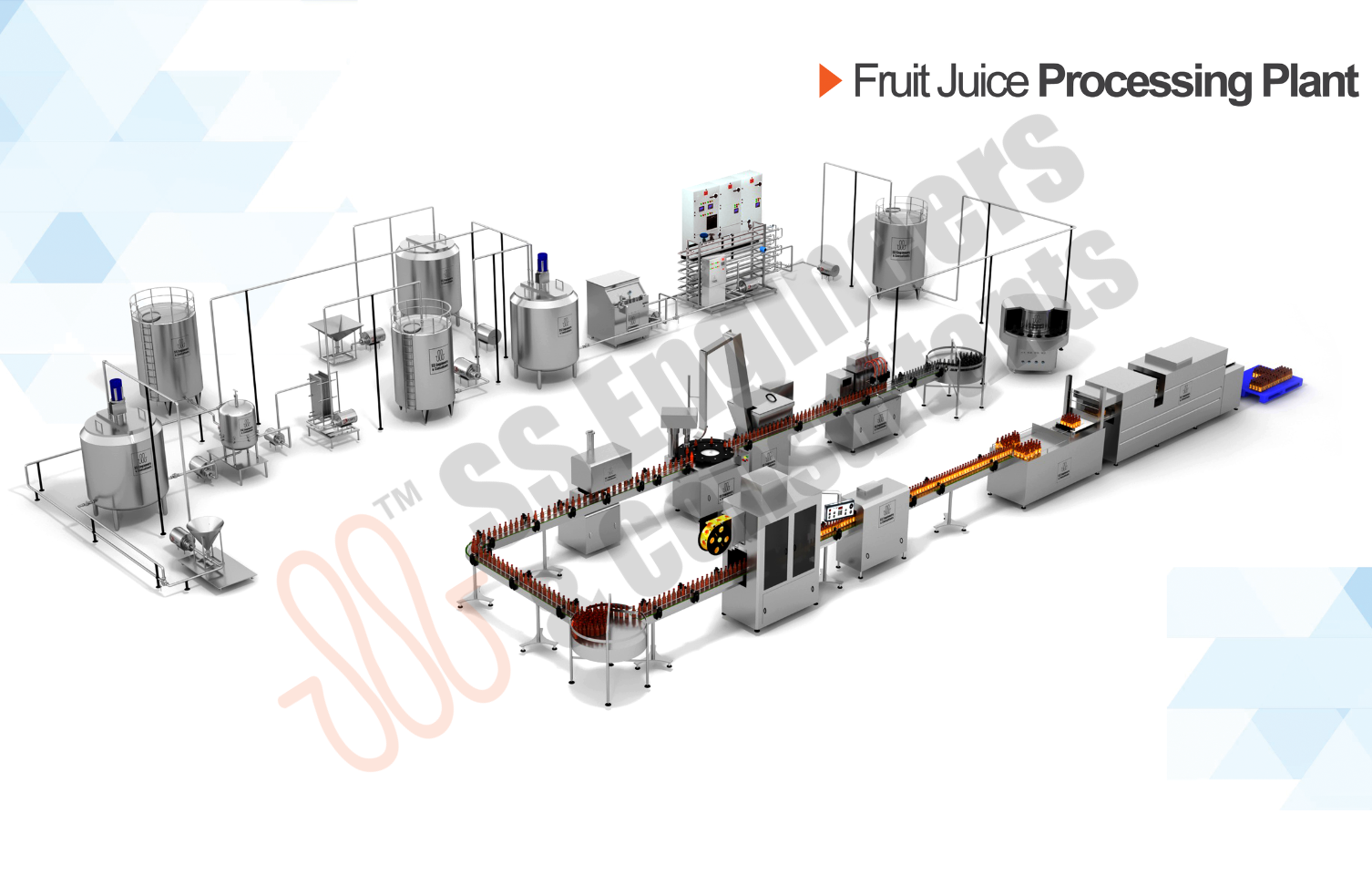Categories
Leafy Green Vegetable Washing Line

Elevate your processing with SS Engineers & Consultants’ quality-driven Fruit and Leafy Green Vegetable Washing Line. With years of expertise, we deliver high-performance washing machines designed for safety and efficiency, meeting the rigorous demands of modern fruit and vegetable cleaning.
Rely on SSEC's advanced technologies that enhance the power, convenience, and effectiveness of each machine. As a trusted name in the industry, SSEC provides top-quality commercial and industrial cleaning equipment that ensures exceptional cleanliness and reliability for all your processing needs.
- Robust stainless-steel construction ensuring hygiene and long-lasting durability
- Automated washing, bubble agitation, and gentle water spray system for effective removal of dirt, soil, and pesticides
- Integrated conveyor system with adjustable speed to handle delicate leafy greens without damage
- Precise water circulation and filtration control to maintain cleanliness and freshness
- Modular design adaptable for spinach, lettuce, kale, coriander, parsley, and other leafy greens
- Compatible with cutting, dewatering, and packaging systems
- Energy- and water-efficient technology to reduce operational costs while ensuring high productivity
See it in Action
Need Custom Solutions?
Our team can develop specialized cleaning solutions tailored to your specific automotive cleaning requirements.
Contact Our Experts

